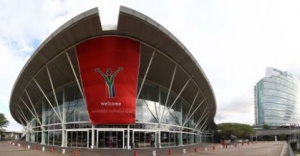African markets identified as key to tourism in South Africa

A research presentation released by South African Tourism at the annual INDABA travel show has reiterated the growing importance of African markets to drive future tourism growth in the country.
SAT went on to outlined key strategies to ensure tourism potential on the continent remains key on the national tourism agenda.
SA Tourism’s regional director for Africa, Phumi Dhlomo, gave a compelling rundown of the strategy, resources and budgets which will ensure the organisation does not simply pay lip-service to African prospects, but backs it up with achievable targets and resources which will see measurable results in tourist arrivals to South Africa from the African continent.
With the Africa region maintaining strong growth of ten per cent in arrivals to South Africa over the last seven years, the intense focus on Africa’s potential has been mandated as a priority in the National Department of Tourism’s National Tourism Sector Strategy (NTSS).
“SA Tourism’s commitment into fully developing the African market is backed by a more than R60 million investment in marketing efforts on the continent,” said Dhlomo.
“Our most recent research has given us a key indication of areas that require strategic shifts in mindsets in the approach to attracting African travellers and we look forward to leading industry efforts in ensuring we take full advantage of the huge potential on our doorstep.”
Growth Strategy
SA Tourism’s research presentation encompasses an overview of the organisation’s growth strategy across four key markets, namely Angola, the Democratic Republic of Congo (DRC), Kenya and Nigeria.
Key aspects of the presentation show the attractiveness of each market in terms of volume, spend and market potential, including insight into consumer travel behaviours.
The ability of each market to act as launch pads to develop regional hubs is also further explored, with Kenya and Nigeria proving significant potential to centralised tourism functions within East and West Africa respectively.
Nigeria remains the leading African market in terms of developmental characteristics; a key aspect when anticipating growth in tourism arrivals.
Their large population characterised by high economic growth has demonstrated consistent growth of seven to eight per cent in arrivals over the past three years.
Angola, on the other hand, has the smallest population out of the four countries included in the report, but demonstrates a huge tourism potential given the average GDP growth rate of the country and the relatively high ratio of travellers that have visited South Africa previously (39,557 in 2010).
Total spend by Angolans visiting South Africa is also a contributing factor to the market’s importance, accounting for the highest spend of the four countries in 2009 (in excess of R729 million).
According to the report, Kenya’s high technology usage trends and great potential to act as a hub for the East Africa region, together with a stable increase of volume and growth between 2007 and 2010 necessitate continued efforts in the region, supported extensively by growth strategies that will counteract the relatively small size of the country as a standalone market.
A similar focus will be put on the DRC; whose unprecedented growth in average spend is indicative of the rapid growth of the middle class market within the country.
Visitors from the DRC have shown the greatest growth in total spend in South Africa, with an impressive 42 per cent increase reported between 2003 and 2009.
“Each country within our focus over the next few years has its own unique nuances and opportunities,” continued Dhlomo.
“Perhaps the most significant conclusion we have reached with our report is that Africa still represents a holistic untapped potential, and that our current arrivals figures stand to grow exponentially as the African travel market emerges from purely purpose-based travel into a true leisure-drive tourism market.
“Going forward, a phased approach is required, using the market insights gained in the report together with a strategic look at the unique consumer demands, media channels and tactical opportunities which exist to fully develop our offering to the African traveller.”
Research Findings
As part of the research conducted, much work was completed with regards to identifying high growth consumer groups within each market.
This direction will allow marketing activities within each region to have maximum effect on consumers, with minimal resource wastage and higher conversion.
In addition, the report outlines consumer groups to maintain or defend, as well as messages, channels and product offerings required per market to deliver on growth potential.
SA Tourism has already shown their commitment to growing the African markets through extensive groundwork over the last few years with the opening of an Angolan office as well as a permanent placement of a trade relations manager in Angola in April this year.
A fully-fledged Nigerian office planned within over the next few years.
“With the projected increase in focus on our Africa air markets, we will continue increasing our efforts in Africa land markets, maximising our efforts to ensure that the South African offering remains entrenched in countries such as Botswana and Mozambique,” continued Dhlomo.
“Holistically, the value that Africa brings to the South African economy goes far beyond tourism and has major benefits for other sectors such as manufacturing, trade and investment and therefore we need to look at inclusive strategies across the region.
“In turn, our commitment to Africa is further demonstrated in the job creation opportunities made available with the extension of the SA Tourism footprint across Africa.
“We are proud to be a part of Africa’s continued growth and we look forward to driving mutually beneficial successes going forward,” concluded Dhlomo.

